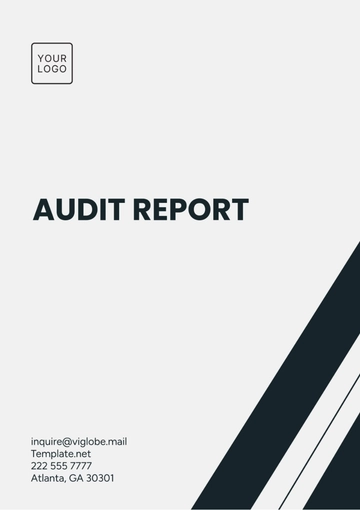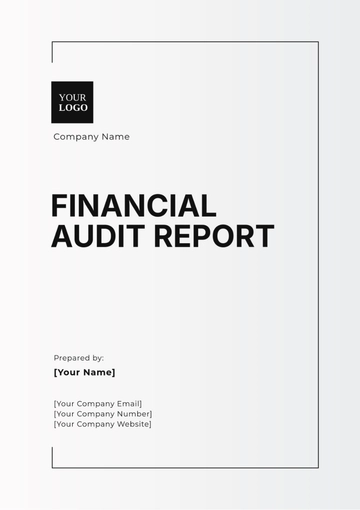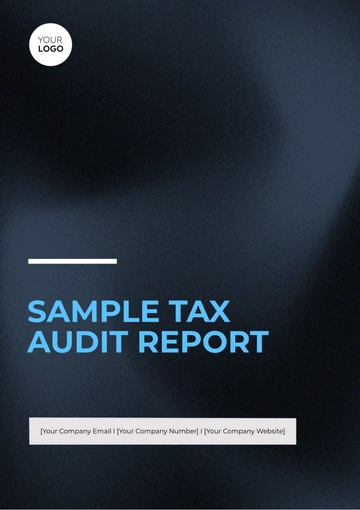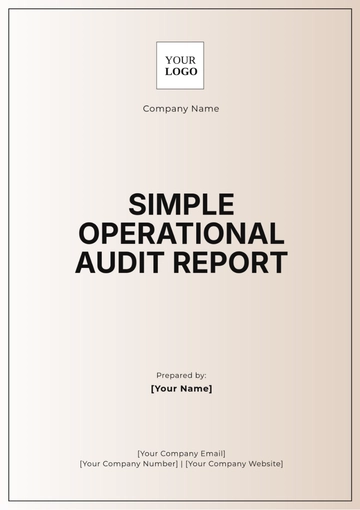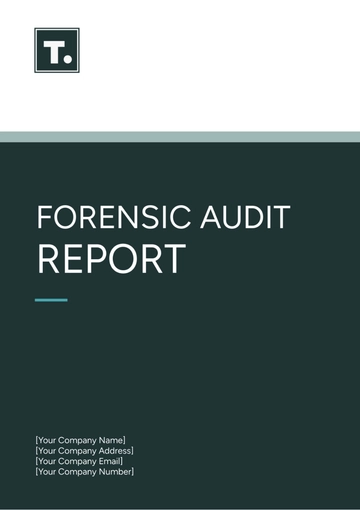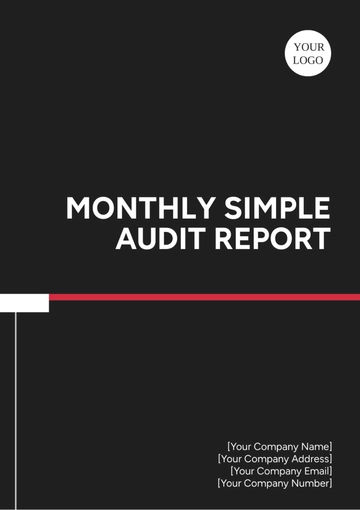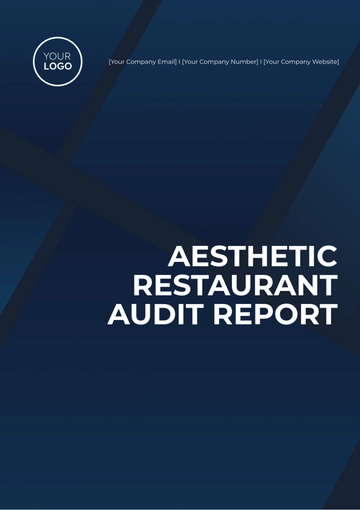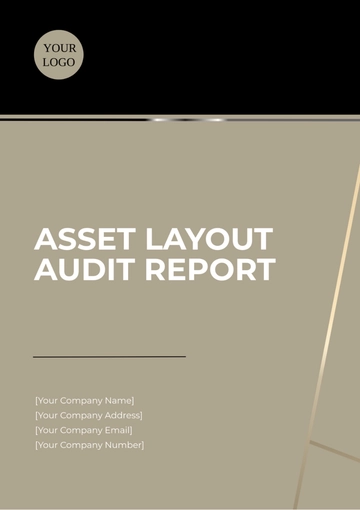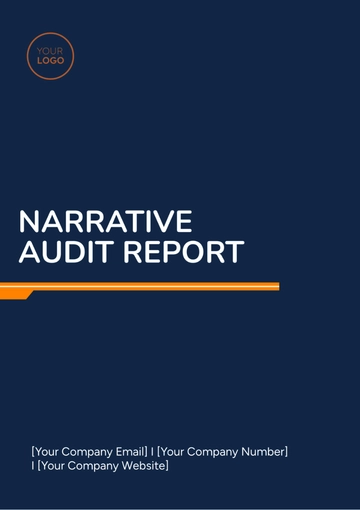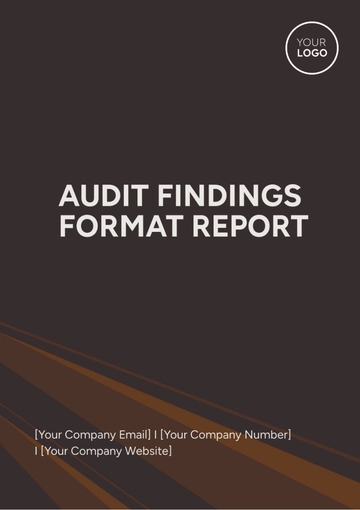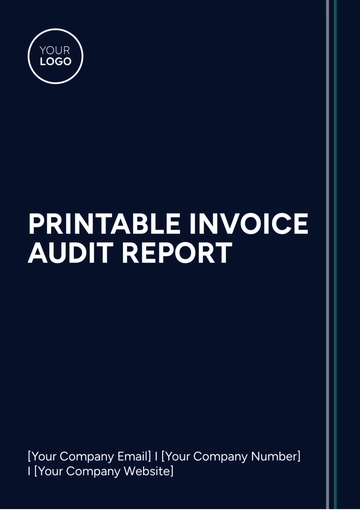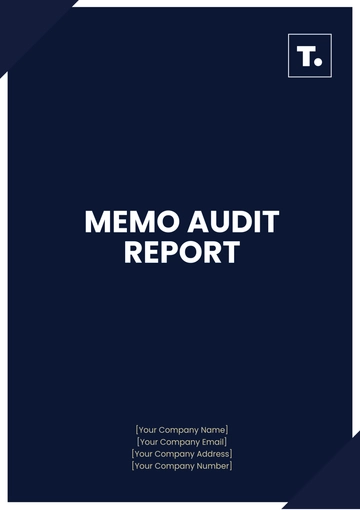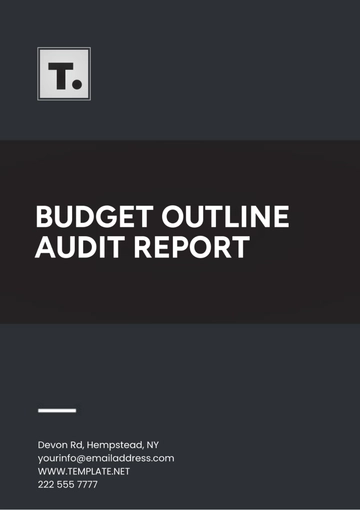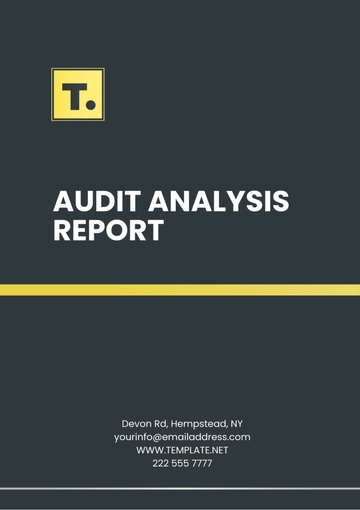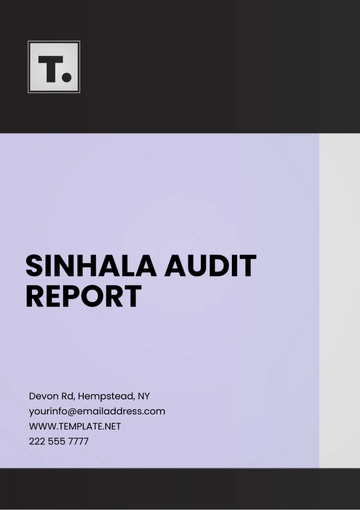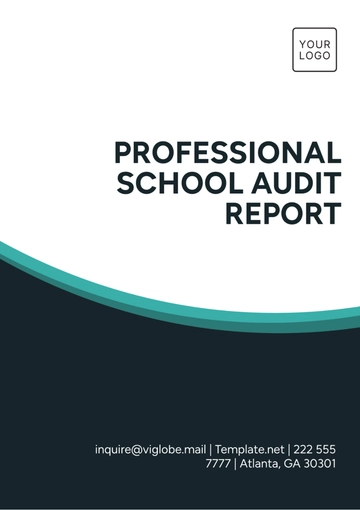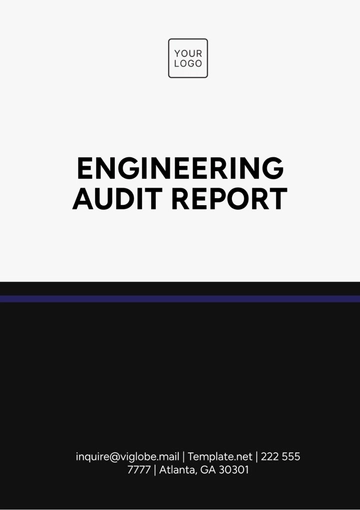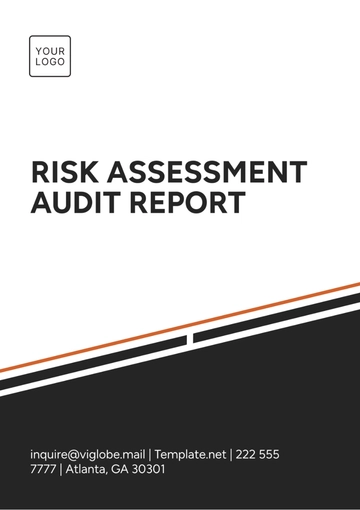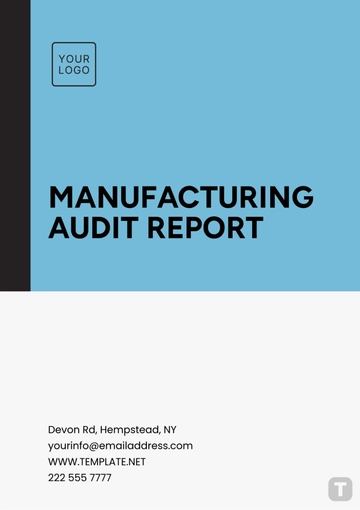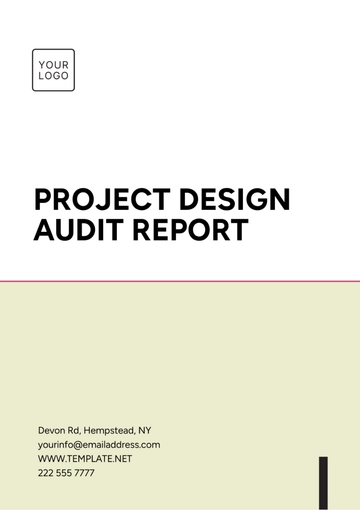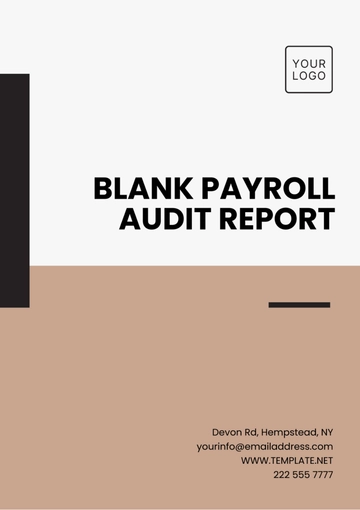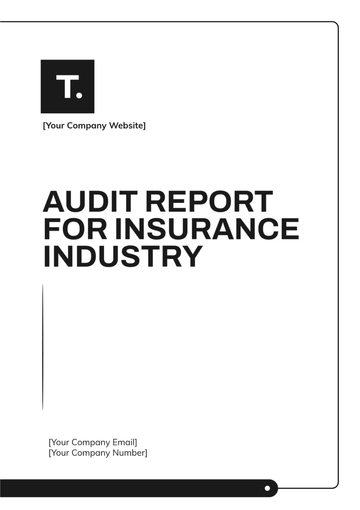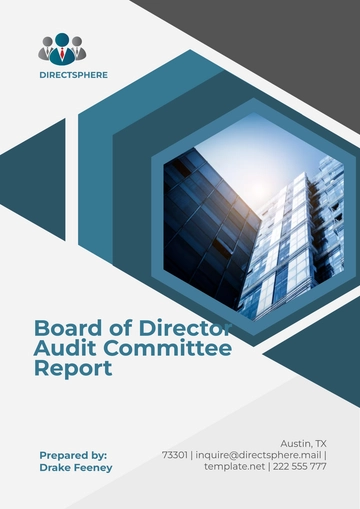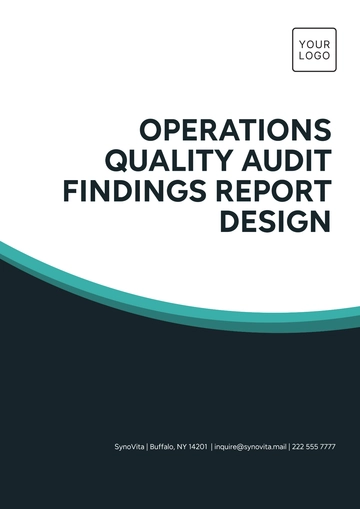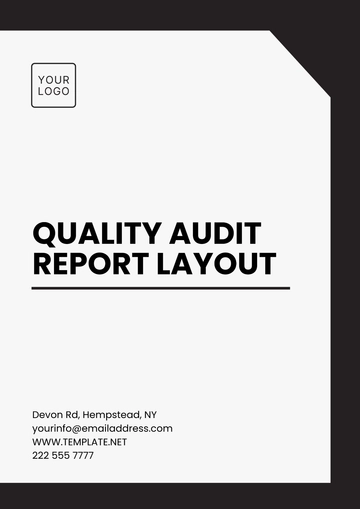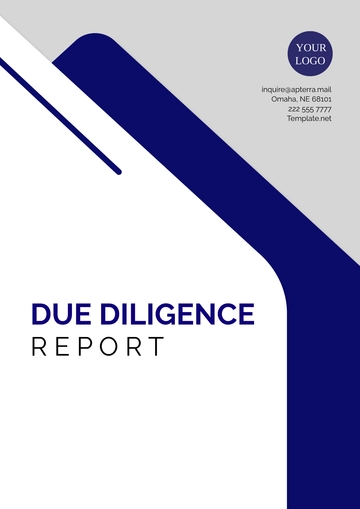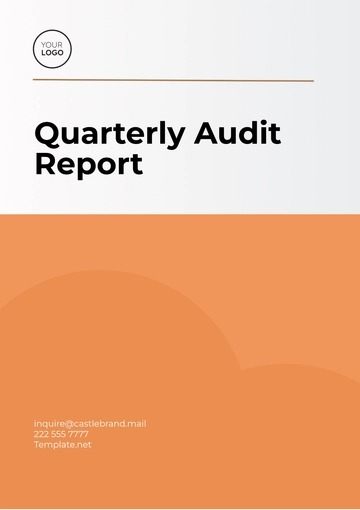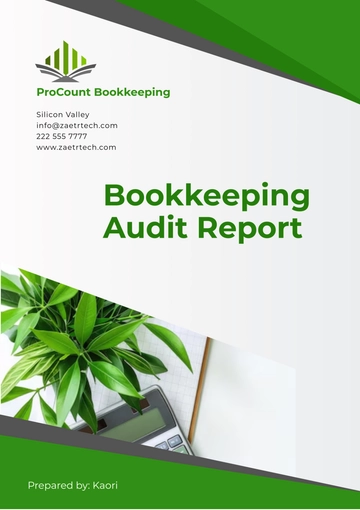Free Commercial Audit Report
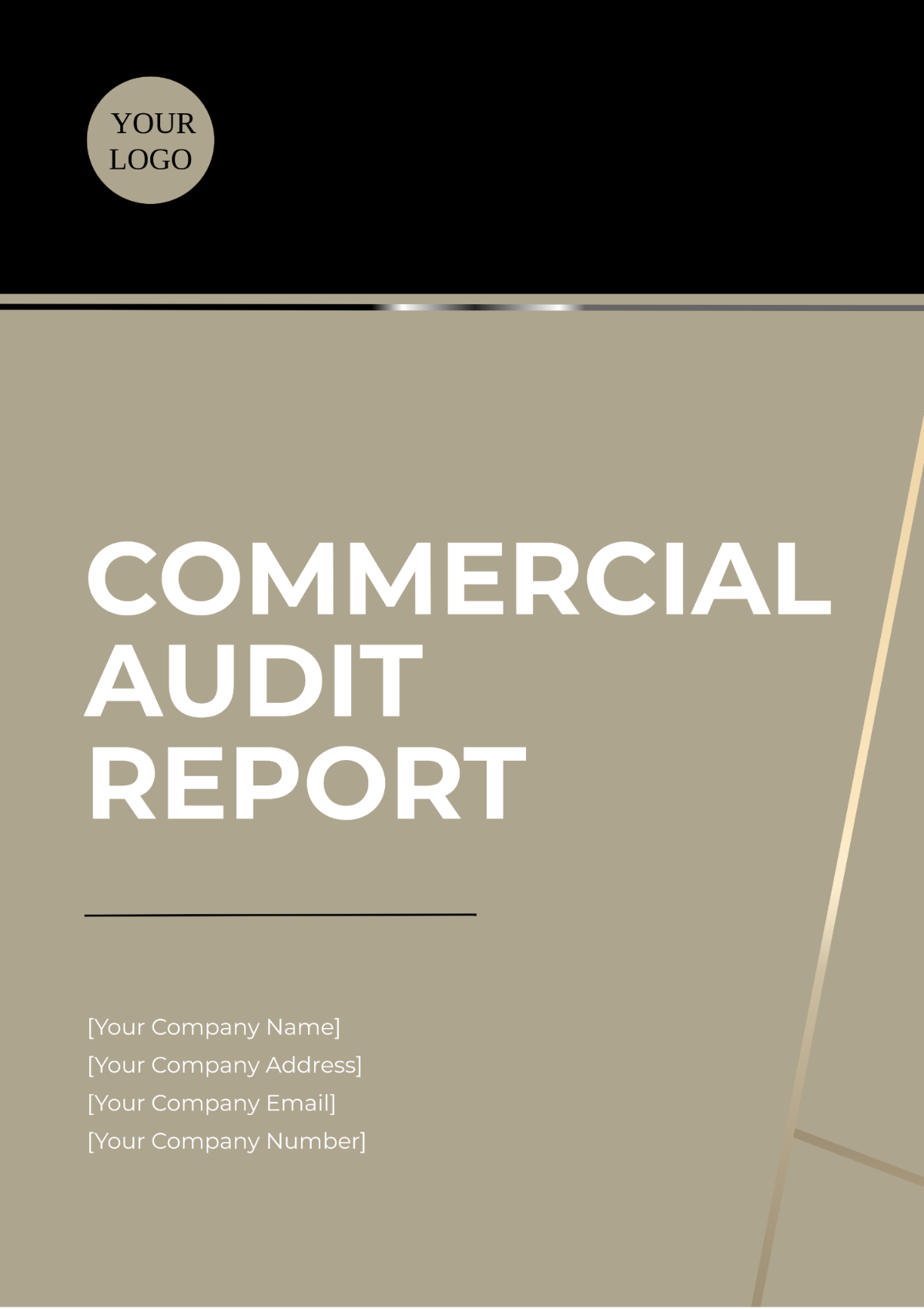
I. Executive Summary
This report provides an overview of the financial audit conducted for [YOUR COMPANY NAME] for the fiscal year ending December 31, 2050. The audit was performed to assess the accuracy and fairness of the company's financial statements and to ensure compliance with relevant accounting standards and regulations.
II. Scope and Objectives
A. Scope
The scope of this financial audit includes the examination of the following:
Balance Sheet
Income Statement
Statement of Cash Flows
Statement of Changes in Equity
Notes to the Financial Statements
B. Objectives
The primary objectives of this audit are to:
Verify the accuracy and completeness of the financial statements
Ensure compliance with Generally Accepted Accounting Principles (GAAP)
Identify any material misstatements or irregularities
Provide recommendations for improving financial reporting and internal controls
III. Methodology
The audit methodology includes the following steps:
Planning and Risk Assessment: Identifying key areas of risk and planning the audit procedures accordingly.
Internal Control Evaluation: Assessing the effectiveness of internal controls over financial reporting.
Substantive Testing: Performing detailed testing of transactions and account balances.
Analytical Procedures: Analyzing financial data for trends and unusual variances.
Conclusion and Reporting: Summarizing findings and providing recommendations.
IV. Findings and Observations
A. Financial Statement Analysis
A detailed analysis of the financial statements revealed the following key findings:
Financial Statement | Key Finding | Implication | Recommendation | Responsible Department |
|---|---|---|---|---|
Balance Sheet | Overstated Accounts Receivable | Potential revenue overstatement | Implement stricter credit policies | Accounts Receivable |
Income Statement | Underreported Expenses | Inaccurate profit margin | Reevaluate expense recognition policies | Accounting |
Cash Flow Statement | Discrepancy in Cash Flow from Operations | Cash flow mismanagement | Improve cash flow forecasting | Finance |
Changes in Equity | Inconsistent Shareholder Equity Reporting | Misleading equity structure | Standardize equity reporting procedures | Corporate Finance |
B. Internal Control Evaluation
Our evaluation of internal controls indicated weaknesses in the following areas:
Accounts Payable: Lack of segregation of duties leading to potential for fraud.
Inventory Management: Inadequate tracking of inventory resulting in discrepancies.
V. Recommendations
Based on the findings and observations, the following recommendations are made to [YOUR COMPANY NAME]:
Enhance Internal Controls:
Implement segregation of duties in the accounts payable process.
Improve inventory tracking systems to ensure accurate reporting.
Strengthen Financial Reporting:
Regularly review and update accounting policies to align with GAAP.
Conduct periodic training for accounting staff on new regulations and standards.
Improve Cash Flow Management:
Develop and implement robust cash flow forecasting models.
Monitor cash flow on a regular basis to identify and address discrepancies promptly.
VI. Conclusion
This audit report for [YOUR COMPANY NAME] has identified several areas for improvement in financial reporting and internal controls. By addressing the recommendations provided, the company can enhance the accuracy and reliability of its financial statements, ensure compliance with regulatory requirements, and strengthen overall financial management.
- 100% Customizable, free editor
- Access 1 Million+ Templates, photo’s & graphics
- Download or share as a template
- Click and replace photos, graphics, text, backgrounds
- Resize, crop, AI write & more
- Access advanced editor
Improve your business operations with the Commercial Audit Report Template from Template.net. This template is editable in our Ai Editor Tool, allowing you to customize your audit report for commercial purposes. Analyze your business performance and make informed decisions with this customizable template. What are you waiting for, download immediately!
You may also like
- Sales Report
- Daily Report
- Project Report
- Business Report
- Weekly Report
- Incident Report
- Annual Report
- Report Layout
- Report Design
- Progress Report
- Marketing Report
- Company Report
- Monthly Report
- Audit Report
- Status Report
- School Report
- Reports Hr
- Management Report
- Project Status Report
- Handover Report
- Health And Safety Report
- Restaurant Report
- Construction Report
- Research Report
- Evaluation Report
- Investigation Report
- Employee Report
- Advertising Report
- Weekly Status Report
- Project Management Report
- Finance Report
- Service Report
- Technical Report
- Meeting Report
- Quarterly Report
- Inspection Report
- Medical Report
- Test Report
- Summary Report
- Inventory Report
- Valuation Report
- Operations Report
- Payroll Report
- Training Report
- Job Report
- Case Report
- Performance Report
- Board Report
- Internal Audit Report
- Student Report
- Monthly Management Report
- Small Business Report
- Accident Report
- Call Center Report
- Activity Report
- IT and Software Report
- Internship Report
- Visit Report
- Product Report
- Book Report
- Property Report
- Recruitment Report
- University Report
- Event Report
- SEO Report
- Conference Report
- Narrative Report
- Nursing Home Report
- Preschool Report
- Call Report
- Customer Report
- Employee Incident Report
- Accomplishment Report
- Social Media Report
- Work From Home Report
- Security Report
- Damage Report
- Quality Report
- Internal Report
- Nurse Report
- Real Estate Report
- Hotel Report
- Equipment Report
- Credit Report
- Field Report
- Non Profit Report
- Maintenance Report
- News Report
- Survey Report
- Executive Report
- Law Firm Report
- Advertising Agency Report
- Interior Design Report
- Travel Agency Report
- Stock Report
- Salon Report
- Bug Report
- Workplace Report
- Action Report
- Investor Report
- Cleaning Services Report
- Consulting Report
- Freelancer Report
- Site Visit Report
- Trip Report
- Classroom Observation Report
- Vehicle Report
- Final Report
- Software Report
